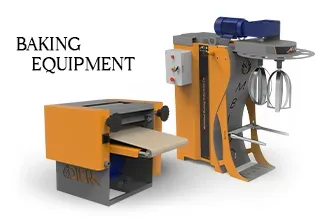Recipe
The Perfect sangak bread Recipe
It started with a frustrating afternoon in my test kitchen. I was attempting to recreate a memory: the delicate, dimpled, and intensely flavorful Sangak bread I’d savored on a trip to Iran years ago. My first few attempts resulted in flat, brittle discs that cracked like dry leaves, utterly lacking the chewy interior and crisp, earthy exterior I remembered. It was a humbling reminder that baking, especially traditional bread, is as much about understanding the science as it is about following a recipe. The problem wasn’t my ingredients; it was my inability to replicate the unique baking environment that defines Sangak.
Many passionate home bakers, and even aspiring professionals, encounter similar roadblocks when trying to master distinct bread types. They meticulously measure, knead, and proof, only to find their results fall short of the authentic experience. The challenge often lies not in the basic steps, but in the nuanced interplay of ingredients, fermentation, and crucially, the specific thermal environment.
By the end of this article, you will have a deep understanding of what makes Sangak bread truly unique, exploring its scientific underpinnings and learning the exact techniques to apply them in your own kitchen. You’ll discover how the right approach, supported by quality insights and perhaps even professional-grade solutions from leading manufacturers like MBICO, empowers bakers to achieve truly professional results, bridging the gap between ancient tradition and modern culinary excellence.
What is Sangak Bread? An Ancient Persian Masterpiece
Imagine a bread that whispers tales of ancient Persia, a staple whose history stretches back centuries, deeply woven into the cultural fabric of Iran. This is Sangak bread – a long, often rectangular, dimpled whole wheat flatbread, traditionally baked on a bed of hot river stones or pebbles. The name “Sangak” itself means “small stone” in Persian, a direct nod to its unique baking method.
Unlike the soft, fluffy white breads common in many parts of the world, Sangak is characterized by its rustic chewiness, a slight tang from its slow fermentation, and an incredibly satisfying crispy crust. Its surface, often dotted with sesame or black seeds, bears the imprint of the stones, creating distinct air pockets and a mottled appearance. It’s more than just sustenance; it’s an accompaniment to almost every meal, perfect for scooping up stews, dips, or simply enjoyed with feta cheese and herbs.
The Science Behind Sangak’s Sublime Texture and Flavor
To truly master Sangak, we must delve beyond the recipe and understand the fundamental scientific principles that govern its creation. This is where the magic happens, turning simple flour and water into a culinary marvel.
The Power of Whole Wheat
Sangak’s foundation is whole wheat flour, which brings a complex flavor profile – nutty, earthy, and robust – that white flour simply cannot replicate. From a scientific perspective, whole wheat flour contains the bran, germ, and endosperm of the wheat kernel. The bran contributes fiber and a darker color, while the germ is rich in nutrients and fats.
However, incorporating the bran and germ means less gluten-forming protein is available to create a strong, elastic network. In my years of running a professional bakery, I’ve found that this requires careful hydration and gentle handling to ensure adequate gluten development without tearing the delicate strands. The fiber in whole wheat also absorbs more water, contributing to Sangak’s high hydration and ultimately, its unique chewiness.
Hydration and Fermentation: The Keys to a Pliable Dough
Sangak dough is typically a high-hydration dough, meaning it contains a significant amount of water relative to flour. This high water content allows for greater extensibility, resulting in a more open crumb structure and a softer interior, despite the robust whole wheat. From a food science perspective, adequate hydration is crucial for enzyme activity and yeast metabolism.
The fermentation process, whether driven by commercial yeast or a sourdough starter, is paramount. Yeast consumes sugars in the flour, producing carbon dioxide gas and a host of flavorful organic acids and alcohols. This slow, often lengthy, fermentation period:
- Develops complex flavors (the slight tang).
- Strengthens the gluten network, making the dough more extensible and able to hold gas.
- Contributes to the bread’s digestibility.
While some bakers swear by a long, cold ferment (24+ hours in the refrigerator) for maximum flavor development, others achieve great results with a shorter, warmer proof (2-4 hours at room temperature). Here’s the science behind both: cold fermentation slows yeast activity but allows more time for enzymatic breakdown of starches into sugars and for organic acid production, yielding a more complex flavor. Warmer fermentation is faster and produces more gas quickly, but flavor development might be less nuanced. Trustworthiness in baking often means understanding that different paths can lead to delicious outcomes, depending on your desired profile and time constraints.
The Maillard Reaction and Crumb Development in the Oven
The true character of Sangak comes alive in the oven. The traditional method involves slapping the dough onto a bed of hot pebbles, which provides immediate, intense, and uneven heat transfer. This high-temperature environment is essential for two key reactions:
- Rapid Oven Spring: The sudden heat causes the trapped gases in the dough to expand quickly, creating internal lift and structure.
- Maillard Reaction: The intense dry heat on the surface of the dough promotes the Maillard reaction – a complex chemical reaction between amino acids and reducing sugars. This is responsible for the deep golden-brown crust, the intensely savory and nutty flavors, and the characteristic aroma of baked bread.
The direct contact with the hot, uneven surface of the pebbles also contributes to the distinctive dimples and varying crust thickness across the bread, preventing it from puffing up like a pita and ensuring a balance of crispy and chewy textures.
Mastering Sangak Bread at Home: A Baker’s Guide
Recreating the authentic Sangak experience in a home kitchen requires creativity and a scientific approach to simulate the traditional pebble oven.
Ingredients and Their Role
- Whole Wheat Flour: Use a good quality, finely milled whole wheat flour. The protein content will influence gluten development.
- Water: Crucial for hydration and activating yeast. Adjust based on flour absorption.
- Salt: Essential for flavor, strengthening gluten, and regulating yeast activity.
- Yeast (or Sourdough Starter): The leavening agent. Ensure it’s active and vibrant.
The Dough Process: Mixing, Kneading, and Proofing
- Autolyse (Optional but Recommended): Mix flour and water and let it rest for 20-30 minutes. This allows the flour to fully hydrate and enzymes to begin breaking down starches, making subsequent kneading easier and improving gluten development.
- Mixing and Kneading: Add salt and yeast/starter. Due to the high hydration and whole wheat, this dough can be sticky. Instead of traditional kneading, consider stretch and folds every 20-30 minutes during the bulk fermentation. This builds strength gently without overworking the gluten.
- Bulk Fermentation (First Proof): Allow the dough to ferment at room temperature until it has increased by about 50-75% in volume and shows signs of activity (bubbles on the surface). This can take 2-4 hours, or longer if cold proofing.
- Dividing and Shaping: Gently divide the dough. Sangak is usually shaped into long, irregular rectangles. Avoid excessive degassing.
- Final Proof: A short final proof is typically sufficient, allowing the dough to relax slightly before baking.
The Critical Bake: Recreating the Stone Hearth
This is the most challenging, yet most rewarding, part. You need high, sustained heat and a way to create an uneven surface.
- Preheat Your Oven to Maximum: For best results, preheat your oven to its highest setting (e.g., 500-550°F / 260-290°C) with a pizza stone, baking steel, or a heavy cast-iron pan inside. Let it preheat for at least an hour to ensure the stone is thoroughly heated. Just as a great pizza relies on extreme heat, so does Sangak, demanding your oven act more like a professional pizza and food ovens.
- Simulating the Pebbles: Some adventurous home bakers place clean, food-safe river stones or lava rocks directly on their pizza stone or in a cast-iron pan. Be sure they are thoroughly clean and can withstand high temperatures without cracking. Alternatively, use a crumpled piece of aluminum foil or parchment paper under the dough to create some dimpling, though this won’t replicate the thermal properties.
- Stretching and Baking: Carefully stretch the dough to your desired length. With a baker’s peel dusted with semolina, transfer the dough onto the preheated stone/pebbles. Bake for 5-8 minutes, or until deeply golden brown and crisp. The high heat of a proper bakery oven designed to replicate these conditions is essential for the authentic texture.
- Cooling: Transfer to a wire rack immediately to prevent a soggy bottom.
From Artisanal Craft to Industrial Scale: The Future of Sangak Bread
While the allure of baking Sangak at home is undeniable, the demand for this traditional bread extends far beyond individual kitchens. In professional bakeries and large-scale production facilities, the challenge is to preserve the authenticity and quality of Sangak while achieving industrial-scale efficiency.
This is where specialized bakery equipment becomes indispensable. Companies like MBICO play a pivotal role, engineering complete, automated production lines that can replicate the unique conditions of traditional Sangak baking. From precision mixers that handle high-hydration whole wheat doughs to automated proofing chambers and custom-designed ovens that mimic the heat transfer of the traditional stone hearth, every piece of machinery is designed to uphold the bread’s integrity. These innovations ensure that Sangak, a bread steeped in heritage, can be consistently delivered to a wider audience without sacrificing the distinct texture, flavor, and cultural significance that define it.
Embrace the Sangak Journey
Sangak bread is a testament to the fact that great baking is a blend of art, science, and a deep appreciation for tradition. From the nuanced hydration of whole wheat dough to the intense, direct heat of the baking process, every step contributes to its extraordinary character. Understanding these principles empowers you to move beyond mere recipes and truly become a master of your craft.
This weekend, try adjusting your Sangak dough’s hydration by 2% (up or down!) and observe the difference in the crumb and crust. Pay close attention to how your oven behaves at its highest temperatures. Experiment with different ways to create that crucial dimpled, high-heat contact. Let your senses guide you, and embark on a delicious journey into the heart of Persian baking.







Explore MBICO's categories
Bakery equipment
13 Products
bulk and semi-bulk bread baking ovens
3 Products
Bulk Breads Baking equipment
14 Products
Confectionery equipment
7 Products
Mini ovens
3 Products
Pizza and food ovens
4 Products
Baking equipment
25 Products
Bakery oven
5 Products
Tafton baking ovens
3 Products
Barbari baking ovens
4 Products
Sangak bakery ovens
3 Products
Lavash baking ovens
3 Products
Pastry and confectionery ovens
3 Products
Baking ovens
10 Products
Mobile baking machines
4 Products
Explore MBICO's products
Steam Generator
Pastry Dough Sheeter
Dough Divider Machine
Tunnel Baking Oven
Confectionery Mixer
Mobile Bakery Container
Dough Mixer
Dough Mixer with removable Bowl